Our Blog - Paris 2022 Day 4
We started our last full day in Paris with a trip up to Montmartre. We took some time to have coffee with a friend of ours, and quickly stopped by the Église Saint-Jean de Montmartre. It is actually an interesting church compared to the others in Paris (and around France), due to the design (built in reinforced concrete), the Art Nouveau brick, and ceramic tile-faced structure. It was finished in 1904, making it a relatively new church. It is the first example of reinforced concrete in church construction. The stained glass windows are also done in an Art Nouveau style.


It still has some traditional elements of a basilica, with three naves covered with reinforced concrete vaults designed to look like the ribs of Gothic cathedrals.
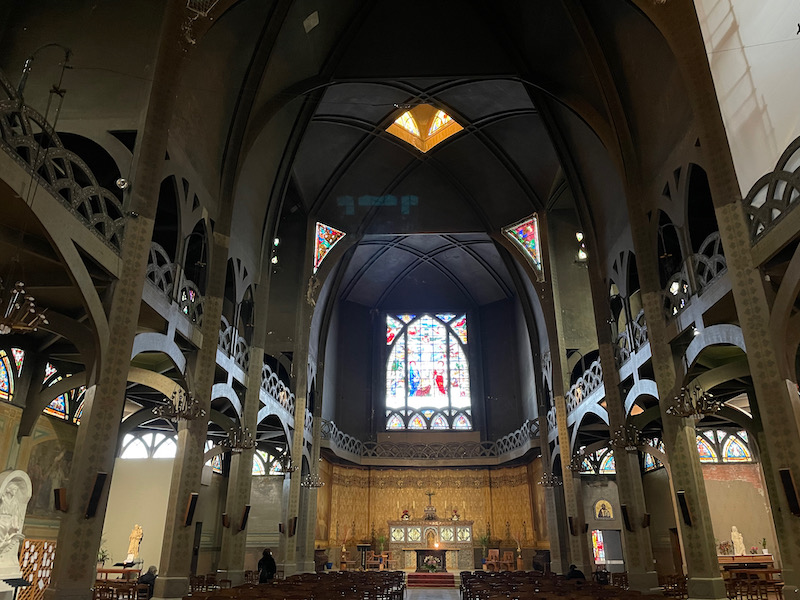
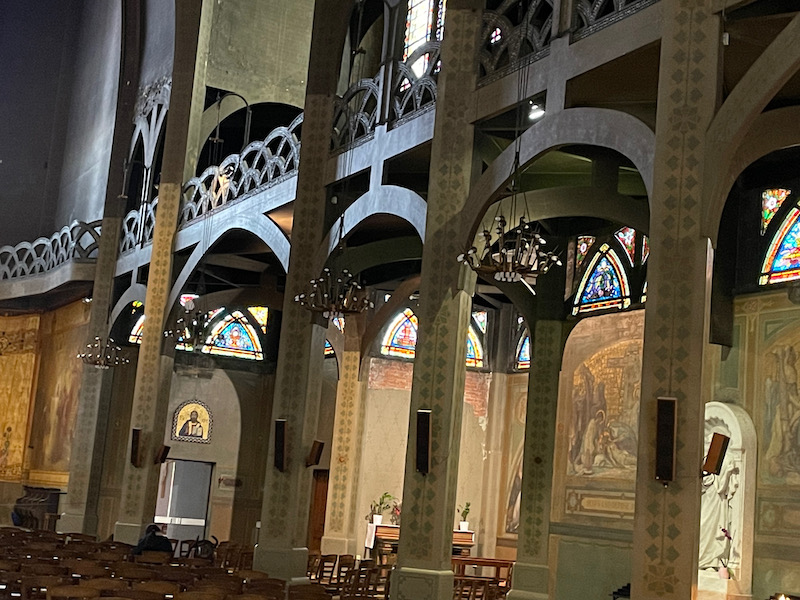
Like the exterior, there are quite a few things in mosaic tiles on the interior, including this side altar.
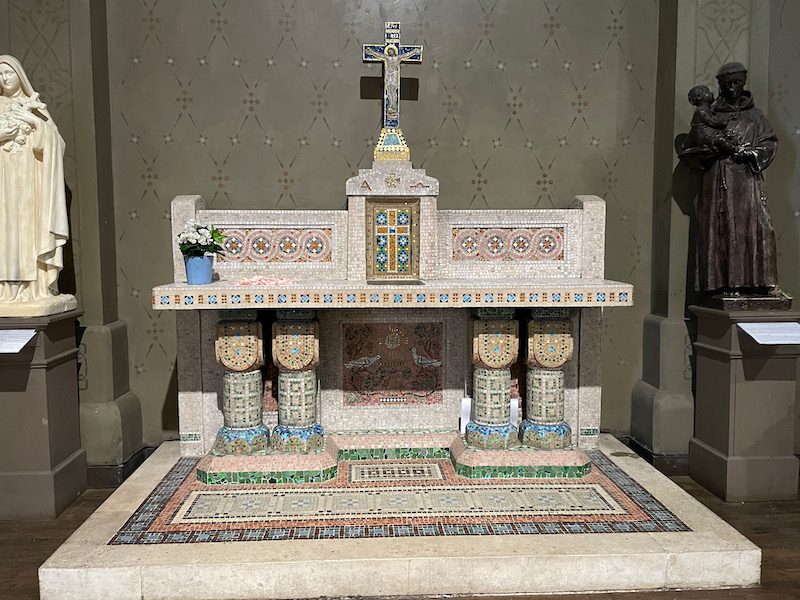

The stained glass windows contain both traditional scenes as well as some interesting ones, like this first one showing a horse with a skeleton soldier next to it.
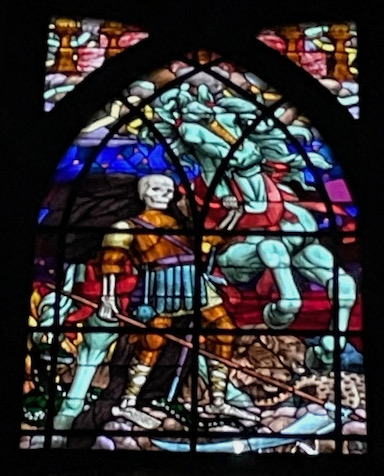
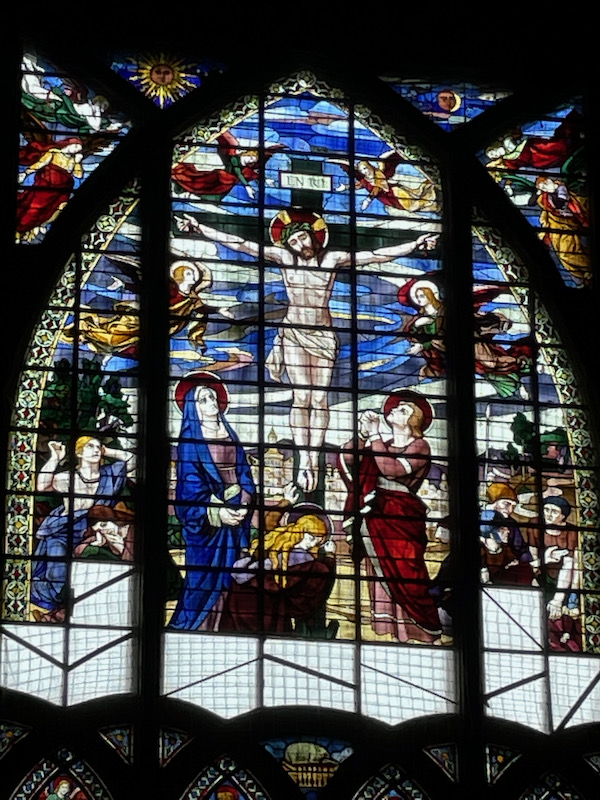

A bit more food ... this time, a croque madame. Some people may be wondering why I took a picture of a sandwich, but this was no ordinary croque madame .... it has that magical bread from Poilâne! For those of you who know about this bread, you can scroll on down. The bakery was created in 1932 and has stayed in the family for 3 generations. The signature bread is a sourdough loaf (a quite sizable round loaf) that is used in some cafes around Paris for these sandwiches. Some default to "normal" bread but allow the customer to upgrade to Poilâne bread for a small surcharge. It is difficult to find in Toulouse in a cafe, so we wanted to be sure we ate a couple of these while we were in Paris. We *can* actually buy the bread at a supermarket in Toulouse, although we haven't yet. Also, for those of you who don't know what a Croque Madame is ... it is a toasted ham-and-cheese sandwich where the cheese is melted on the top instead of in the middle. The "Madame" adds the fried egg on top with the "Monsieur" being egg-less.
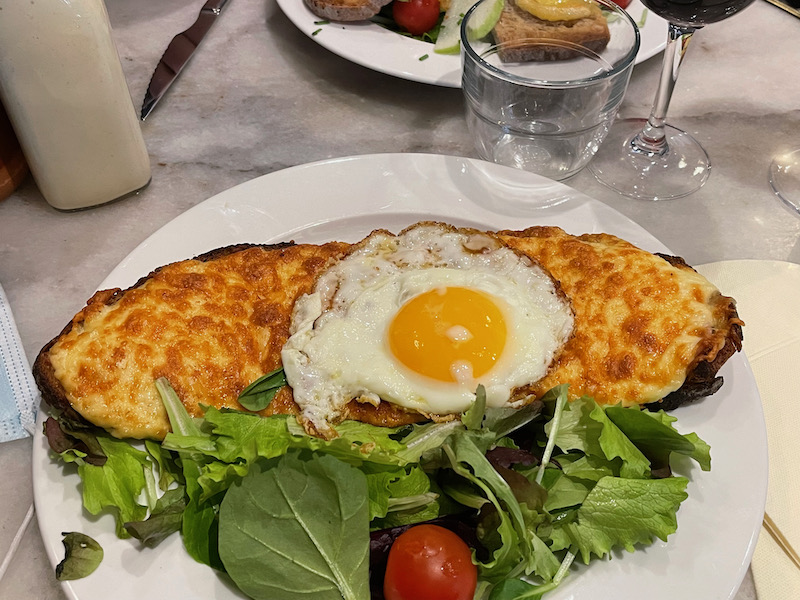
Then we walked a little while, going by the Pantheon. It was built between 1758 and 1790, at the behest of King Louis XV. It was intended to be a church dedicated to Saint Genevieve, Paris' patron saint, whose relics were to be housed in the church. Neither the designer nor Louis XV lived to see the church completed. By the time the construction was finished, the French Revolution had started; the National Constituent Assembly voted in 1791 to transform the Church of Saint Genevieve into a mausoleum for the remains of distinguished French citizens, modeled on the Pantheon in Rome which had been used in this way since the 16th century. The pediment has central figures of the Nation and Liberty: statesmen and scholars to the left, soldiers to the right.We didn't have much time, so we didn't buy a ticket to go inside. It has been in the news lately quite a bit because Josephine Baker had a "symbolic interment" there just recently. She was not removed from the cemetery in Monaco where, but instead, her empty monument here contains soil from her birthplace in Missouri, some from France, and some from the cemetery in Monaco.
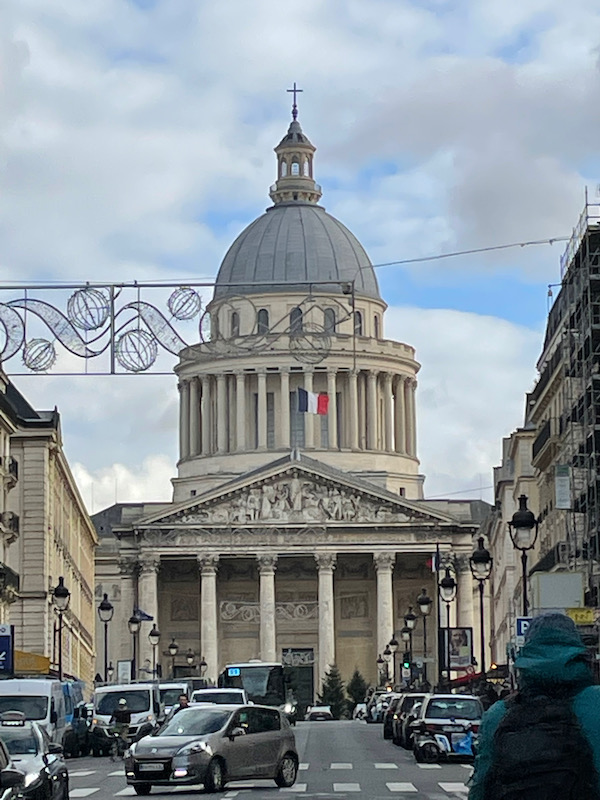
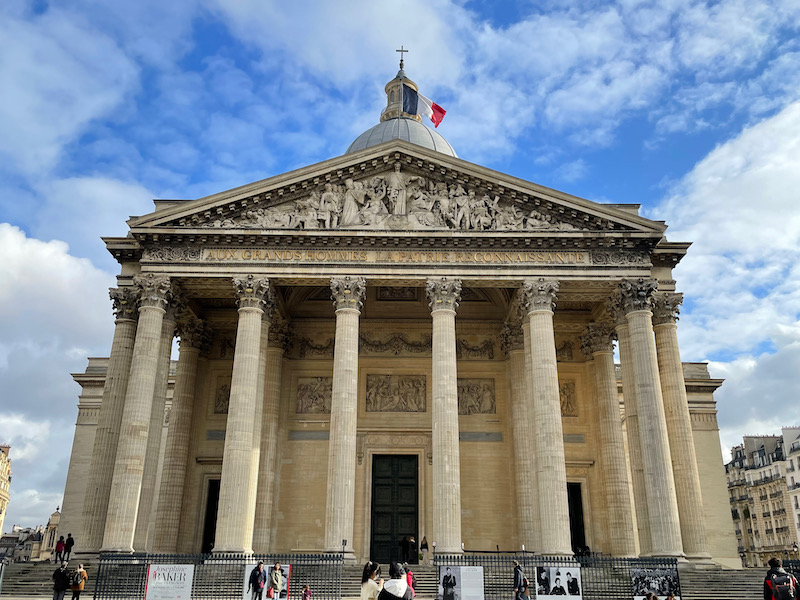
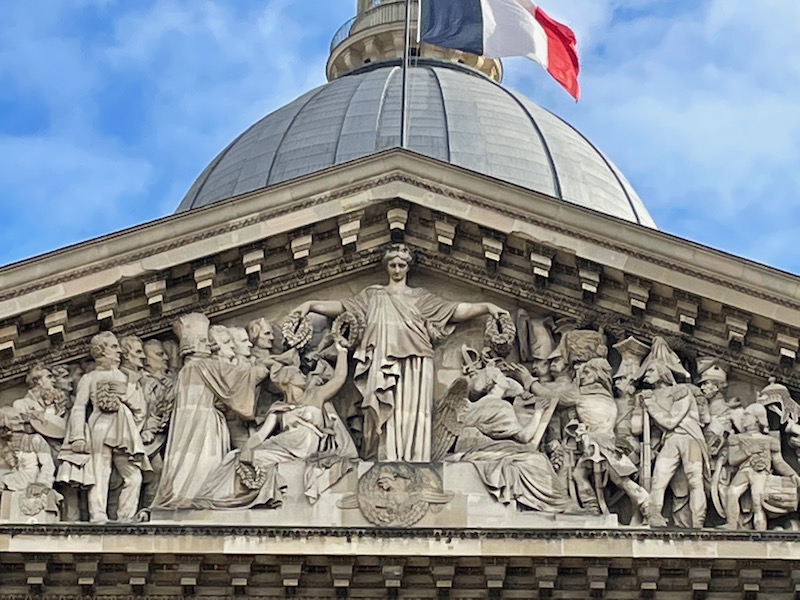
Just next door is the Eglise Saint-Etienne du Mont, which was not open at the time. It dates from the 15th and 16th centuries.
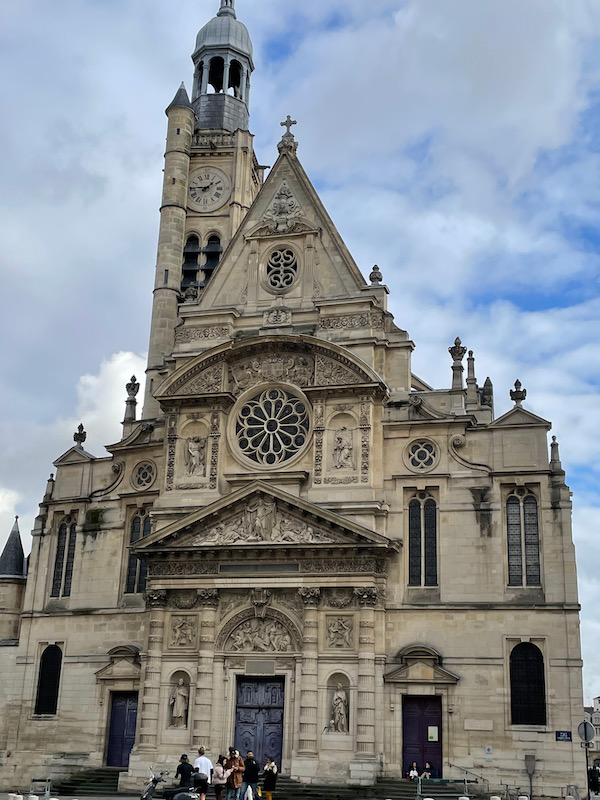
We continued to just walk around, and came by the Église des Saints-Archanges, which is a Romanian Orthodox church (also not open). The mosaic in the tympanum shows the 3 archangels Michael, Gabriel, and Raphael.
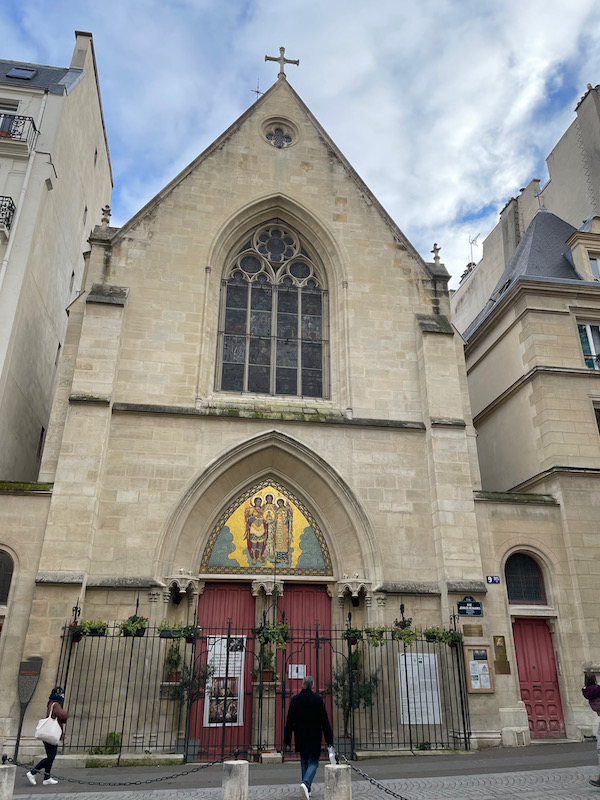

We have visited the Musee d'Orsay several times, but this time we decided to take a 2-hour guided tour from Paris Walks. The museum is housed in the former Gare d'Orsay train station, built between 1898 and 1900 for the 1900 Paris Exposition. It was convenient for commuting travelers, being so close to downtown, but by 1939, the platforms couldn't handle longer trains and was no longer really useful. It was going to be demolished but, thankfully, it was changed into a museum instead. The idea was to build a museum that would bridge the gap between the Louvre and the National Museum of Modern Art at the Georges Pompidou Centre and it now houses mainly French art dating from 1848 to 1914. It houses the largest collection of Impressionist and post-Impressionist masterpieces in the world.
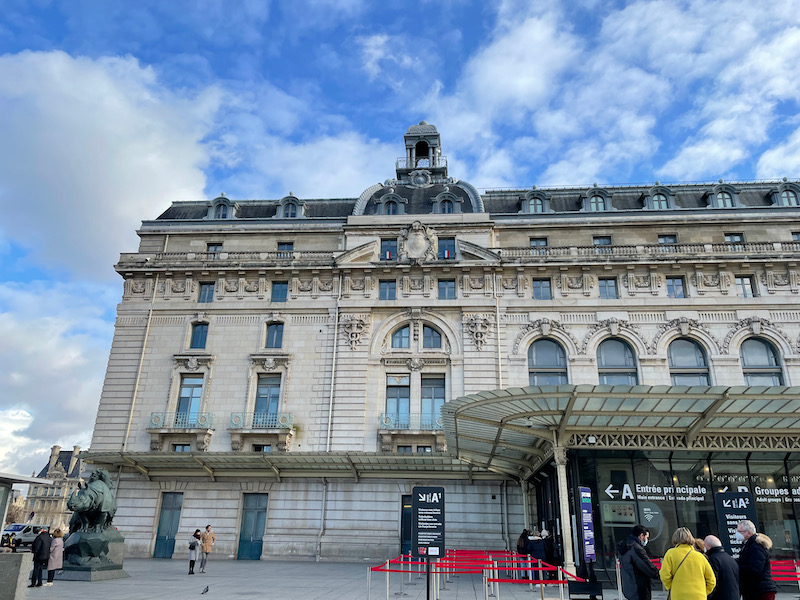

As we waited for our guide, I took a look at a set of statues outside. These are 6 bronze allegorical sculptures, originally produced for the 1900 Paris Exposition and depict the 6 of the continents (Antarctica is not shown). Each was done by a different artist. They are (in the order shown): Oceania, South America, North America, Africa, Asia, and Europe.
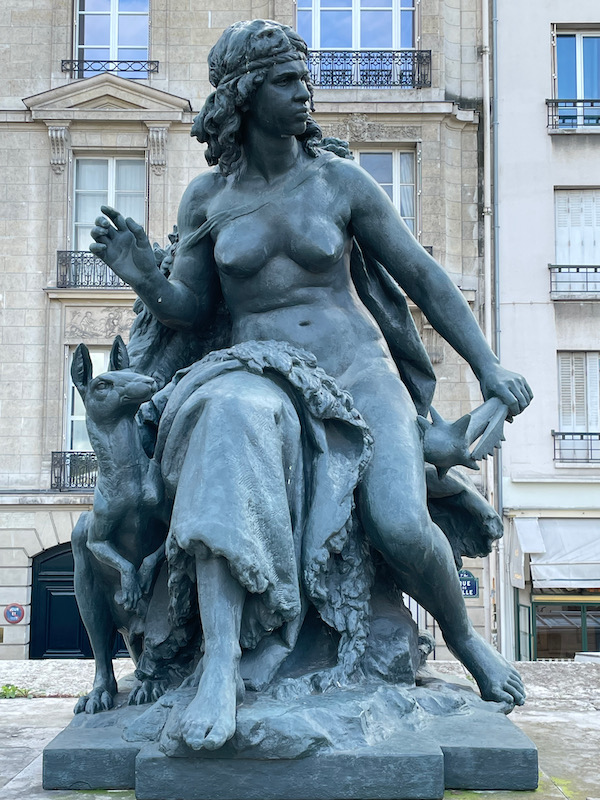


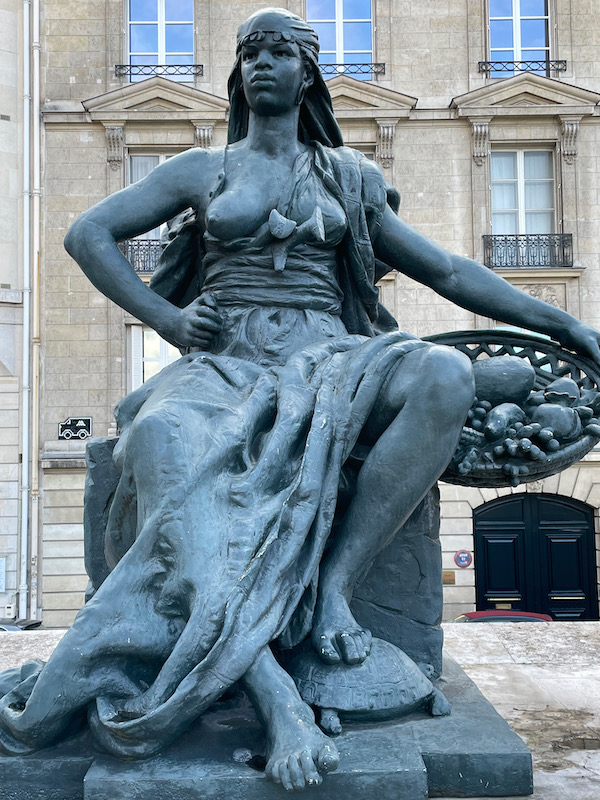
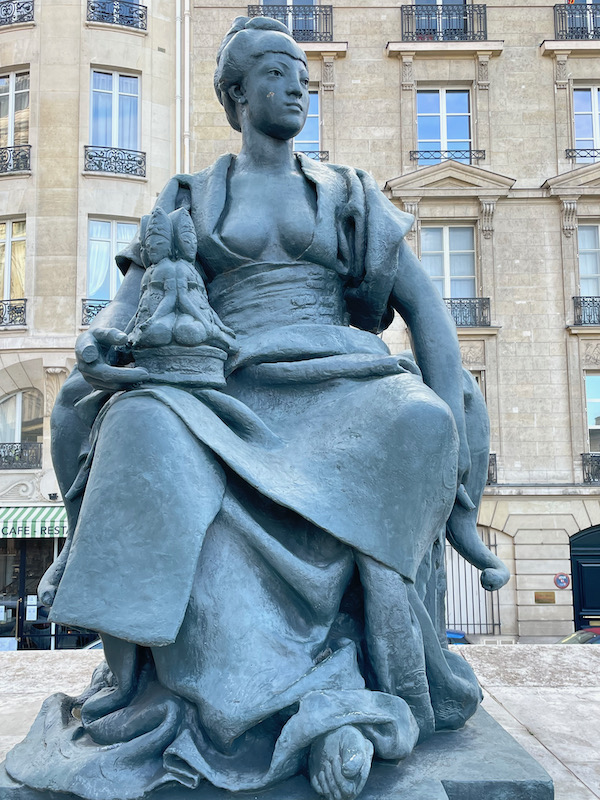

You can still picture the train station in the interior, with the original clocks there. The ceiling is so tall to allow the steam from the steam trains to rise.



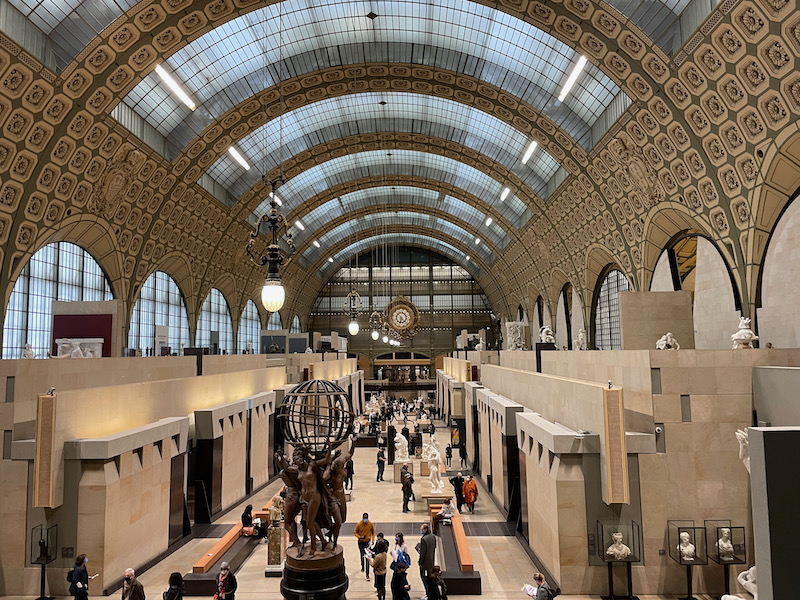

Just a few select pieces of artwork, this first one from Jean-François Millet entitled Les Glaneuses (The Gleaners), done in 1857. Millet is noted for his paintings of peasant farmers and can be categorized as part of the Realism art movement that emerged in France in the late 1840's. Millet did quite a few paintings of peasants, this one showing 3 women "gleaning" a field of stray stalks of what after the harvest was completed. It was not received well by the French upper-class when it was done because they felt it "glorified" the peasant classes.
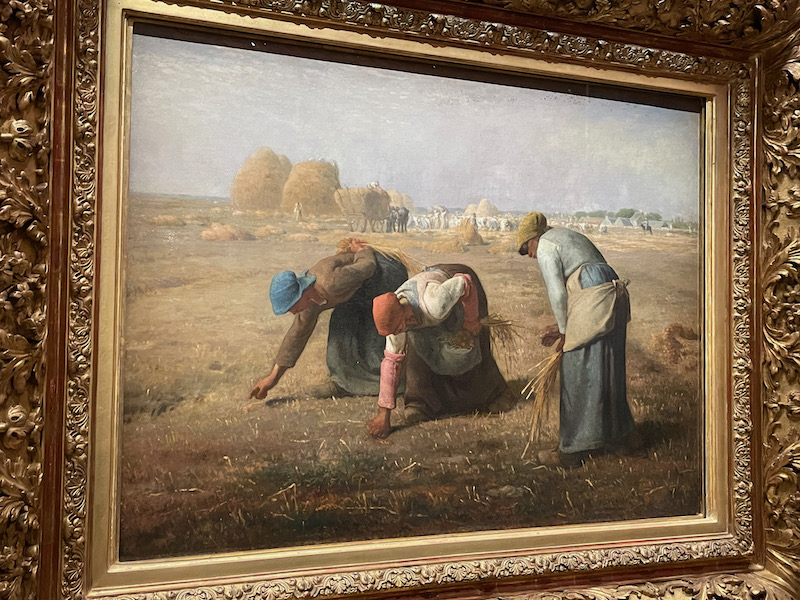
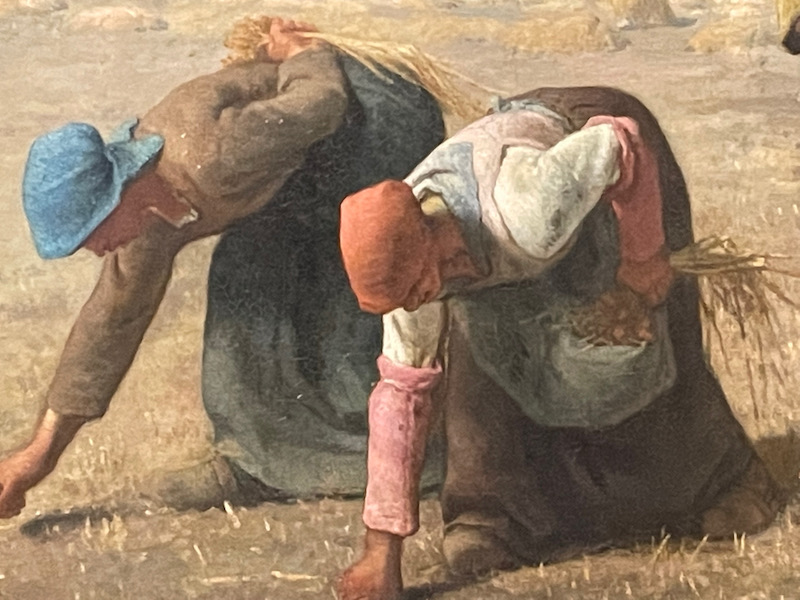
Here I am going to show 2 different pieces by 2 different artists that our tour guide specifically spoke about. The first is by Jean-Baptiste Carpeaux that was done between 1857 and 1861 (two pictures, in Bronze) and the second by Rodin, which is white plaster, done in 1881. Both show the same thing, which is Ugolino surrounded by his 4 children. Ugolino was a tyrant in the 13th century who was locked up in a tower with his children and grandchildren, sentenced to starve there. Legend has it that Ugolino ate the dead bodies of his children and grandchildren to stay alive longer (although later interpretations say that no, he didn't eat his children). Dante wrote about Ugolino in his "Divine Comedy", where the aristocrat is placed in the deepest circle of Hell. He explains to Dante how the prisoners were slowly dying and his own sons begged him to eat them after their deaths. This story is the reason why Ugolino is known as "The Cannibal Count" and is often represented as eating his own fingers, as he is here. The second one shown is by Rodin, which was done later. Rodin puts Ugolino in a different position, crawling over the bodies of his dying children. Naked, grimacing, on all fours, this desperate man has lost all sense of human dignity. His pose was both humiliating and original in the art of Rodin’s day. Interestingly enough, this one is listed as being done by Rodin but if you go to the Rodin museum, there is a Bronze where Ugolino is not looking up and the muscles are not as defined. There are several Wikipedia entries that show this version and another one.
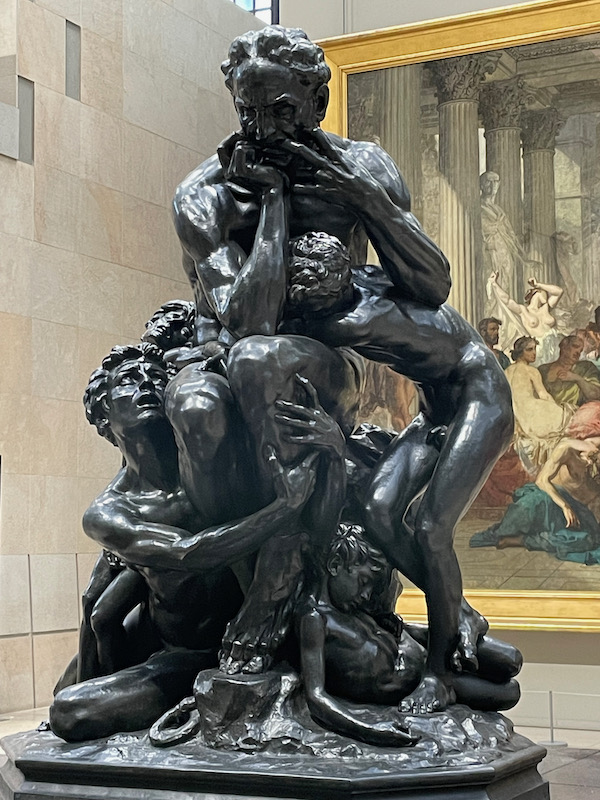
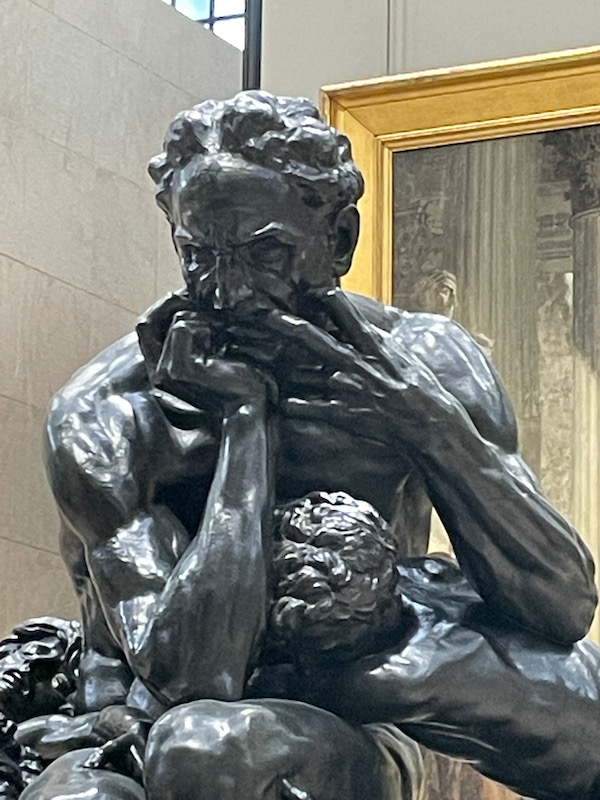
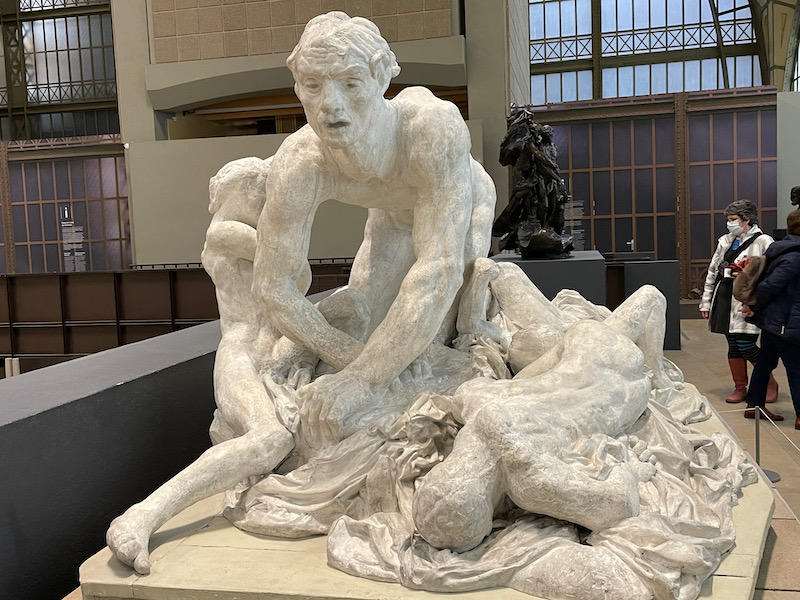
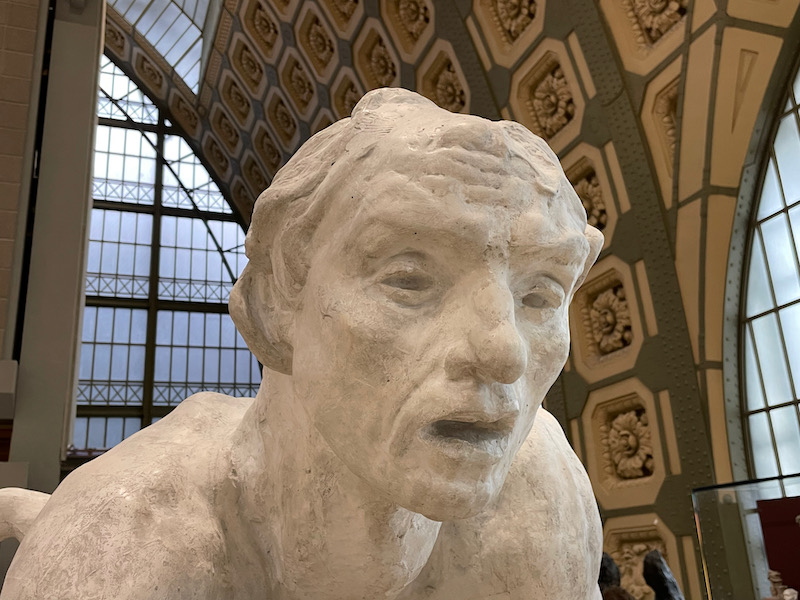
This is always one of my favorite works, called Le Démolisseur (The Demolition Worker). It was done between 1897 and 1899 by Paul Signac. Signac was a French Neo-Impressionist painter and one of the founders of Pointillism. After meeting with Monet and Seurat, he experiment with scientifically-juxtaposed small dots of pure color, intended to combine and blend when viewing the painting as a whole, not specifically "on the canvas". Look at the whole painting, then the minute detail of the belt. This isn't what I would call "full" pointillism, since you can still see some amount of stroke and line.

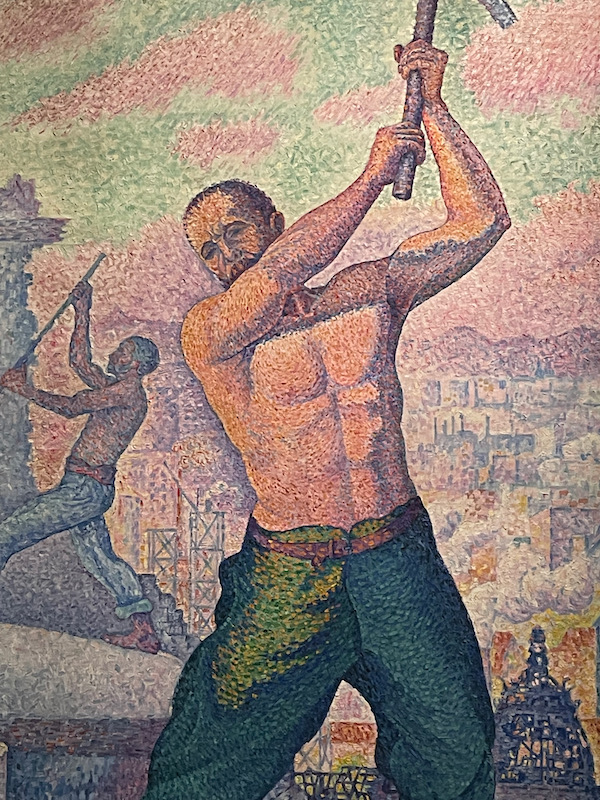

Van Gogh's bedroom during the time that he lived in Arles, but painted after he left Arles and was committed to the psychiatric hospital in Saint-Rémy. This is actually the 3rd (and last) version of the same painting. Here you can see the very severe, almost cartoonish quality of the painting, and the very visible brushstrokes. In a letter to his brother Theo, he explained that he wanted to express the tranquillity, and bring out the simplicity of his bedroom using the symbolism of colors.
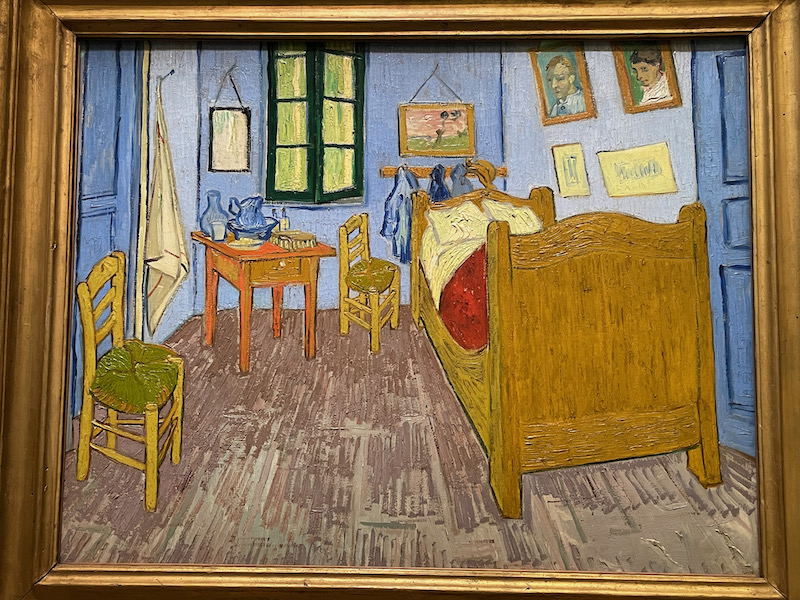

Another Van Gogh, this one finished in 1890 while still in the hospital. This one was inspired by paintings of Jean-François Millet, another French impressionist painter who did quite a few paintings of French peasants in the countryside. He supposedly admired Millet's ability to paint humanity in a simple, familiar, and solemn way. This one is known as "The Siesta". Here you see more of his very wavy brushstrokes that were very apparent in his works.
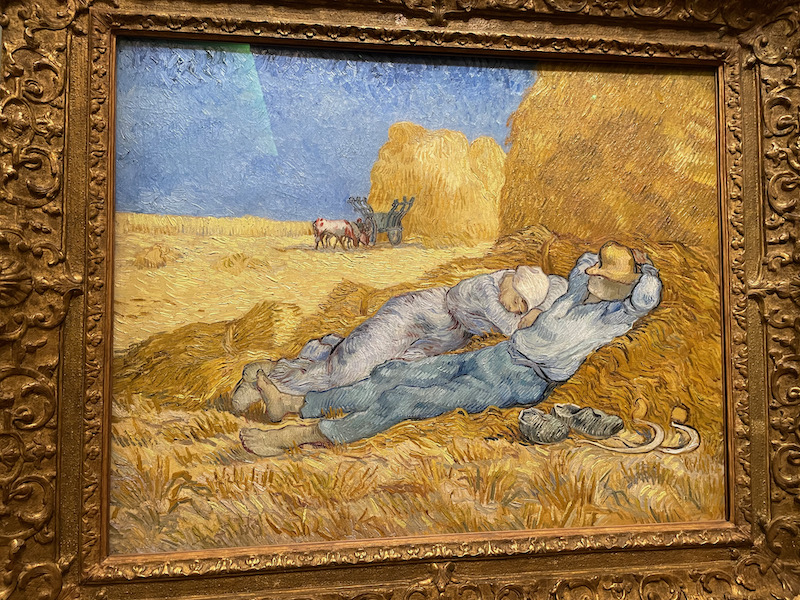

Another example of the wavy strokes of Van Gogh.
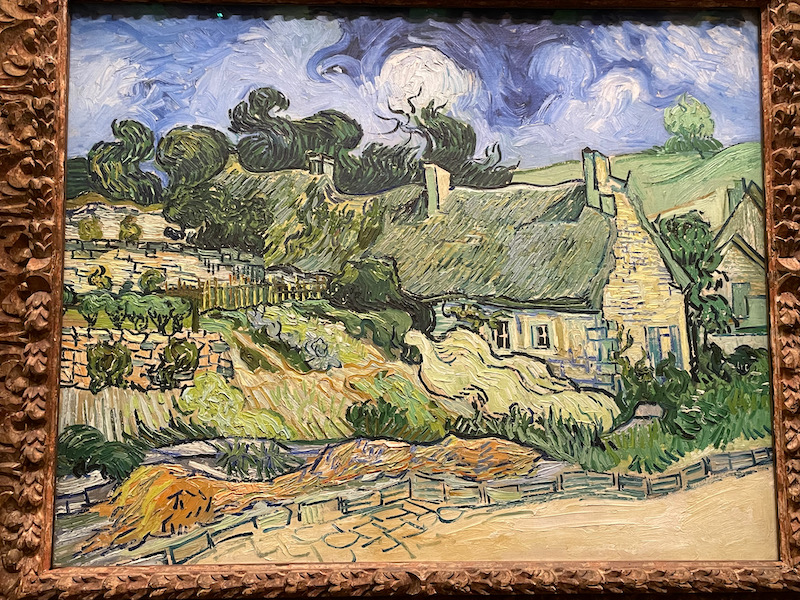
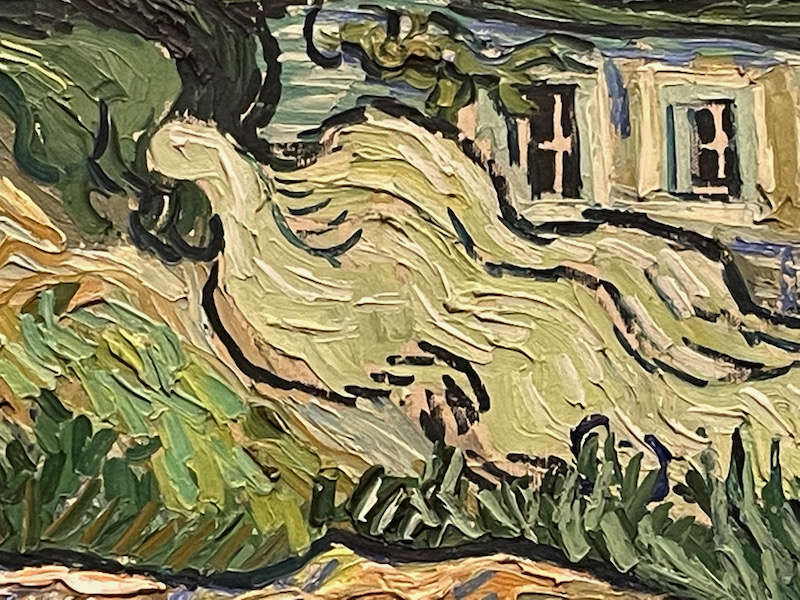
We then took advantage of the lack of crowds at the museum to take a few pictures up-close and personal with some of Van Gogh's more famous works.

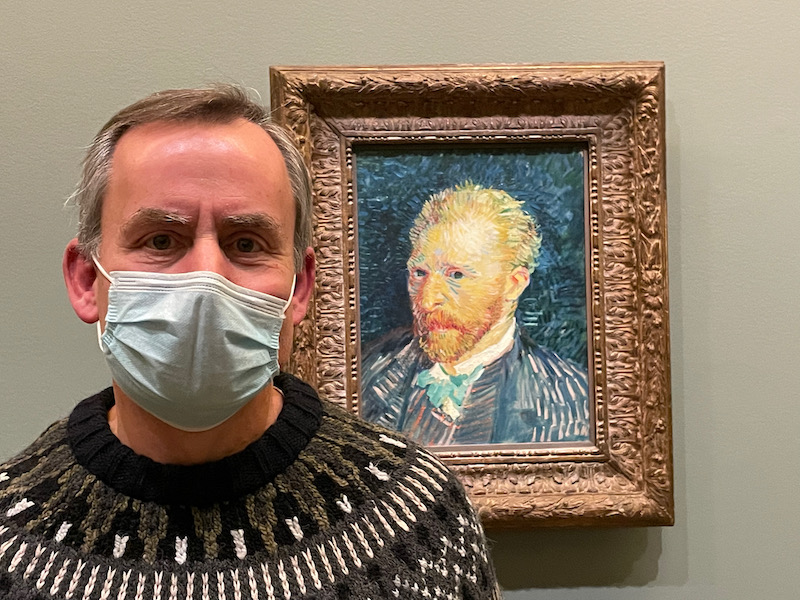
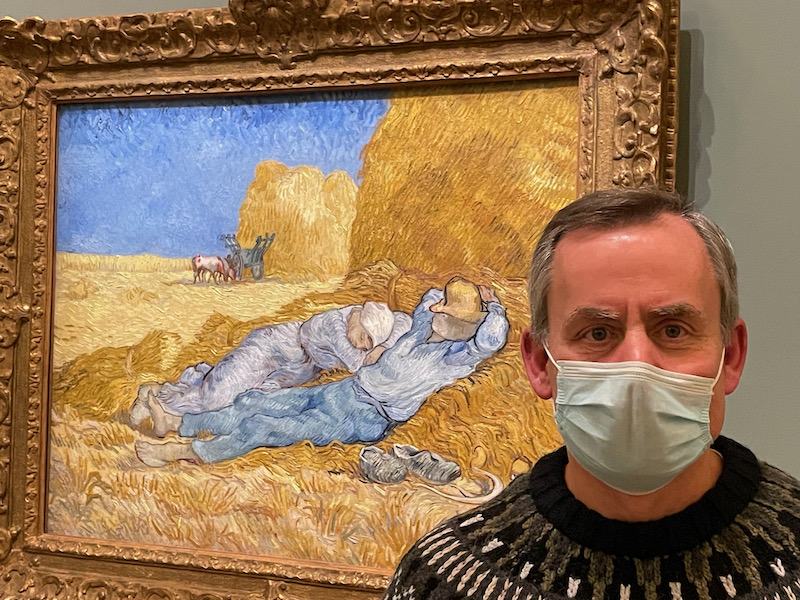
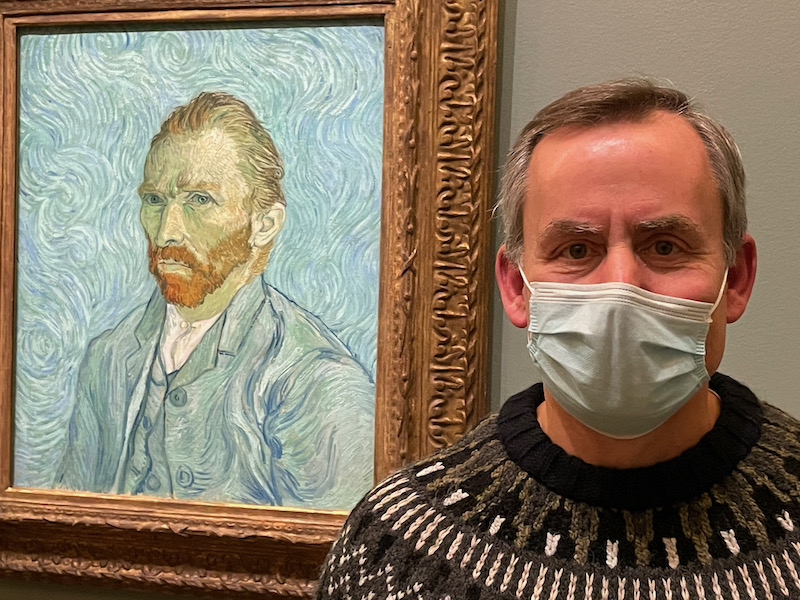
I think this set is interesting. One of the things that our guide mentioned was that one of the features of Impressionism was that you need to be away from the painting to really appreciate it. One of the paintings that she discussed (which I didn't take a picture of) shows a woman in a dress that, from a distance, you can see the sheen on the silk, but up-close, it looks very flat and dull. In this set, the closer you get to the painting, the less clear the image of the church is.

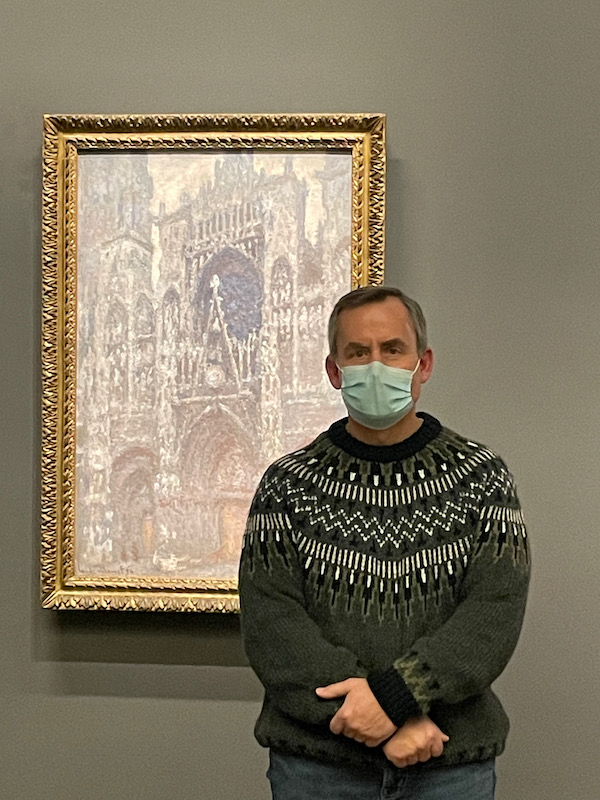
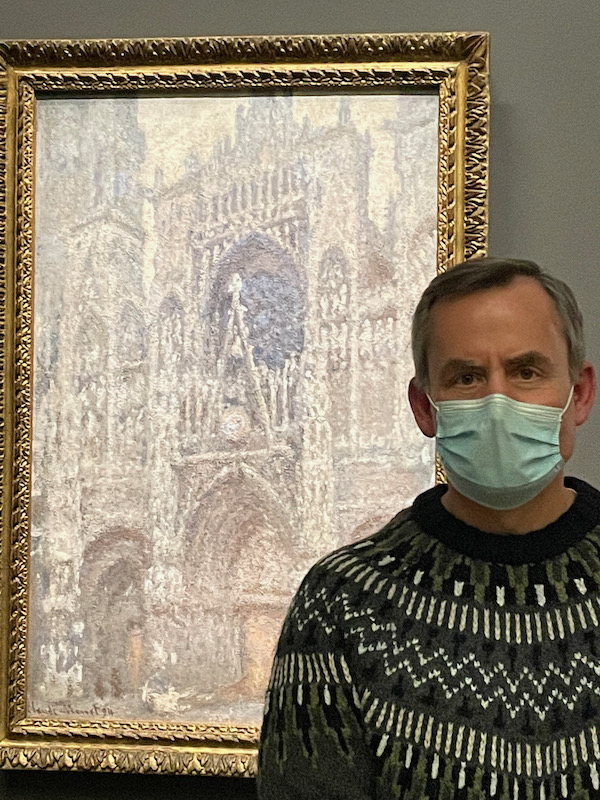

This is a cross-sectional model of the Opéra Garnier, and show a lot of detail that most of us never know about. As you enter (on the right-side of the picture), there is the main foyer and the grand staircase that the spectators use to get to the large domed auditorium. For most people, that is as far as you get. But if you walk around it, you realize how massive it is. In fact, the part that most of us see is just a bit over half of the actual theater.
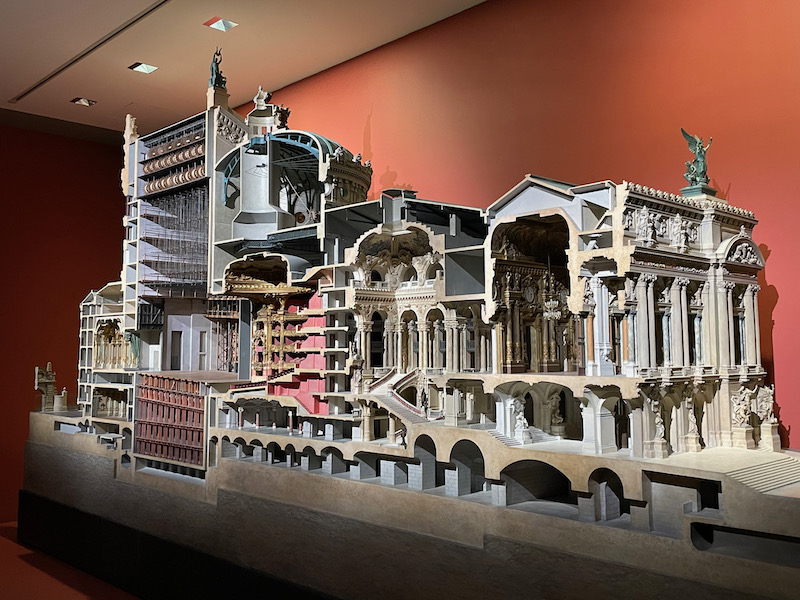
Here we have the grand foyer and then the staircase which takes everyone into the main area.
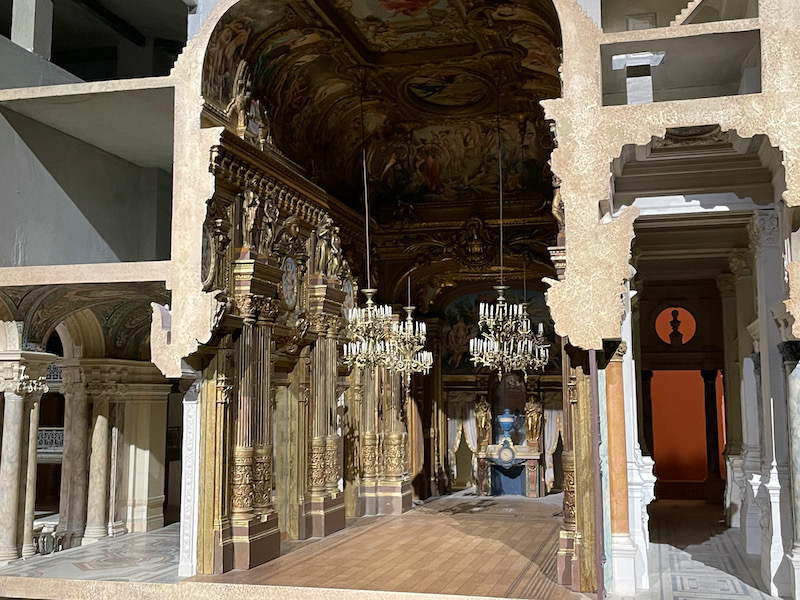
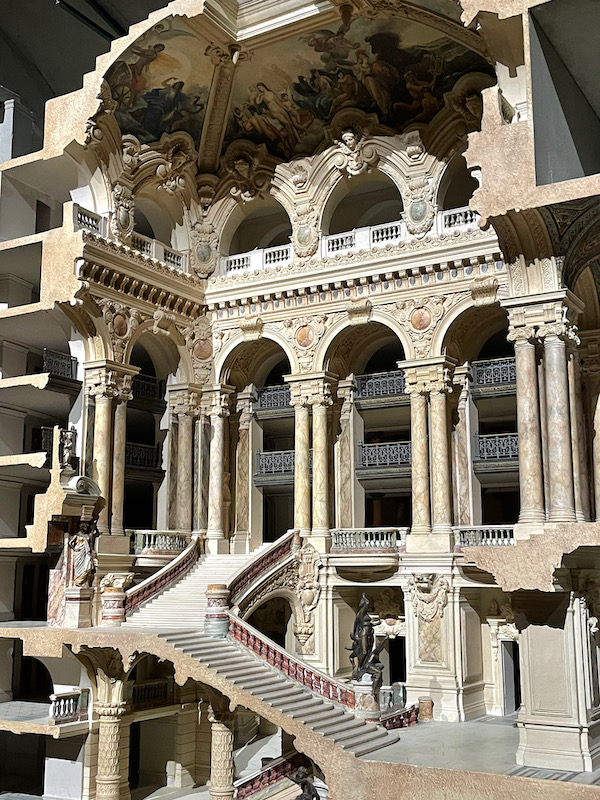
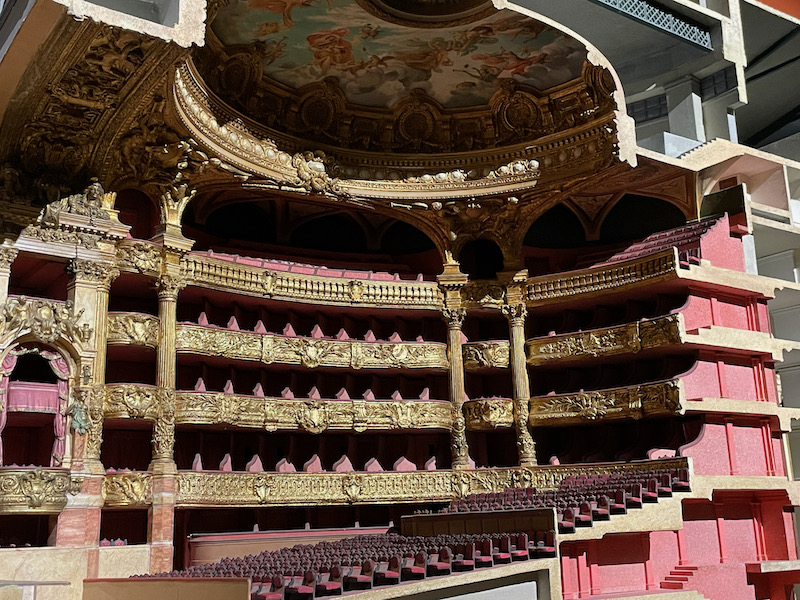
This is the stage, but look at all of the things above and below the open stage area ... That is a huge and complex fly system and trap room machinery. These mechanisms allow different sets to be raised and lowered to change the scene on the stage.


At the back, there are several rooms for the dancers, including a nicely-decorated one where some of the spectators could meet the dancers.
